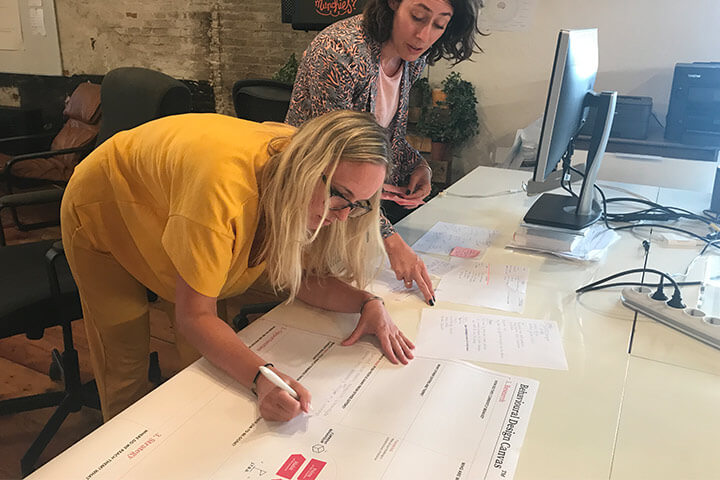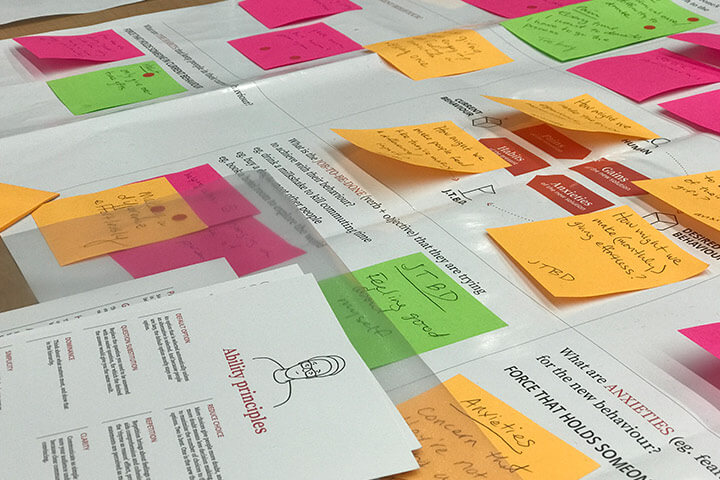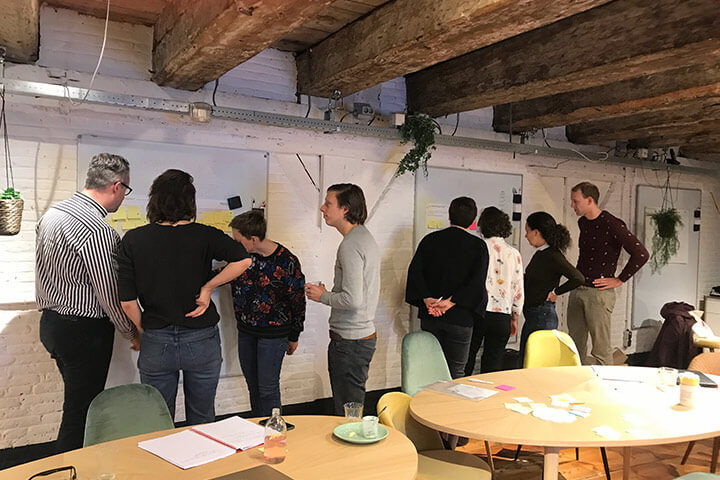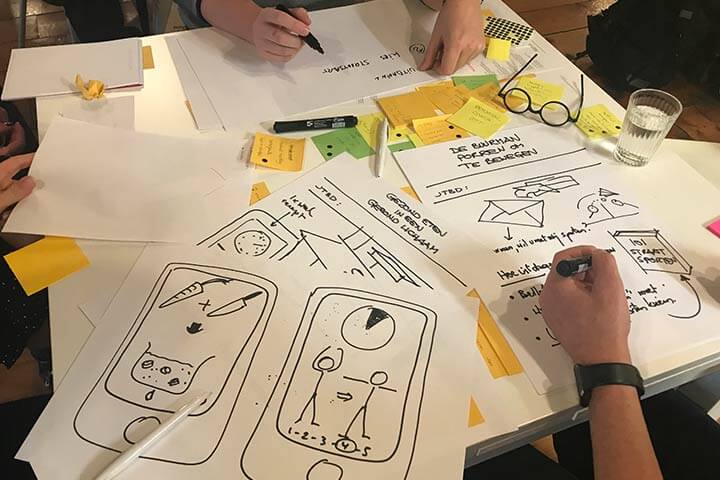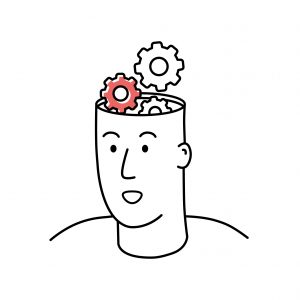With “Start With The End”, Matt Wallaert wrote a great book on how companies could benefit from behavioural science. In the book, he evangelised the idea of the Chief Behavioural Officer (CBO), a senior executive role who manages a Behavioural Science Expert Team. Last year, I interviewed Matt at Behavioural Design Fest and asked him if he still thinks organisations need a Chief Behavioural Officer. He was in a great place to answer that question because he recently resigned as CBO himself at his former employer Clover Health. He admitted that a separate behavioural expert team led by a CBO isn’t the only or even the best approach.
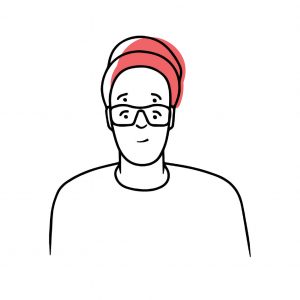 Science as a process, behaviour as an outcome
Science as a process, behaviour as an outcome
What’s more important, according to Matt, is “Science as a process. and behaviour as an outcome”. Organisations that benefit from behavioural science have found a way to leverage the scientific method of the social and behavioural sciences to create better outcomes. It doesn’t matter if your job is to design products, services, customer experiences, policies or campaigns. Everything you do aims to influence people’s decisions and get them to do something. Understanding the hidden forces that affect your target group’s thoughts and decisions is critical to improving your offering.
You can’t get someone to vote for you unless you know how you can connect with their deepest fears and desires. You can’t get someone to stick to their workout unless you help them deal with all the obstacles preventing them from coming to the gym. You can’t get someone to change the way they eat unless you can change the choice architecture of what’s available. The examples are endless of how deep human understanding can make or break products, services, programs, or policies.
So, what is Behavioural Design?
The simple definition of Behavioural Design is that it’s a process and a method. Behavioural Design is a method for finding human insights, coming up with ideas and figuring out how to make them work. The underlying process is Design Thinking, a fancy word for the typical steps a designer would take to solve a problem: empathise with the user, define opportunities, design solutions, prototype and test the most promising ideas, and refine the design.
Read more about this in our most popular blog, “What is behavioural design”.
Want to learn how to design behaviour?
Join our two-day Fundamentals Course and master a hands-on method to use behavioural science to develop ideas that change minds and shape behaviour.
Two ways to set up behavioural design in an organisation
There are two approaches to how organisations try to benefit from the power of behavioural design:
- Decentralised: A Behavioral design Guild
- Centralised: A Behavioural Design Lab
The centralised approach: Behavioural Design Lab
The Behavioural Design Lab was Matt Wallaert’s setup in mind when he wrote the book “Start with the End”. The idea is to set up a separate lab with a small group of behavioural experts that would work independently of the business units. The mission of a lab is usually to generate best practices by tinkering with landing pages, letters, communication and services. They are commissioned to set up experiments to generate evidence of how a nudge here and a reframing there can make a huge difference.
This setup’s advantage is its most significant disadvantage: Knowledge and know-how remain siloed. Furthermore, the successes the labs generate are often incremental and highly tactical. You always hear the same little success stories like the written post-its on a questionnaire (reciprocity) or the social proof cues on the payment reminder.
We believe that there’s a much more powerful way to harness the power of behavioural design in organisations.
The decentralised approach: Behavioural Design Guild.
The opposite approach is to form a guild or chapter of Behavioural Design Leads. The Behavioural Design Experts are part of the multidisciplinary business teams in this approach. In addition to roles like Product Owner, Scrum Master, and UX expert, you would also have a Behavioural Design Lead. They would be responsible for gathering human insights, defining behavioural outcomes, setting up workshops to come up with ideas, and organising prototype testing. They would work on every step of the insight, design and implementation process to add behavioural intelligence.
A guild is a group of experts who share the same interest but don’t work in the same teams. They get together regularly to share ideas, learn from each other’s best practices, and deepen their skills.
There are two significant advantages to this approach. First of all, it’s being applied to the things that matter: actual products, services and communication with the customer. When used successfully, its effects can directly be measured by the KPI’s that matter to the organisation: acquisition, activation, retention, revenue, cost-saving, and profit.
Secondly, everyone in the team gets to experience how taking the irrationality of the customer into perspective can be incredibly interesting, fun and rewarding. In turn, this will fuel overall excitement to do more with behavioural design.
Want to become your team's Behavioural Design expert?
We have created a brochure that explains all the ins and outs of the Advanced Course that teaches you all the ropes of setting up and facilitating Behavioural Design projects. From the program to the former participants. From the investment to the needed time commitment: it's all in there.
So what to do next?
The first step is to train yourself in Behavioural Design. You can do that at our Behavioural Design Academy or at training programs that our competitors offer. Don’t study too hard on the science, but check the practice instead. In other words: you don’t need to know or learn every scientific principle or discovery. You need to understand how to use those principles in practice to analyse behaviour and develop ideas for interventions.
The second step is forming a guild and learning from each other through peer-to-peer coaching. Again, you can hire SUE to help with this practice or hire a coach.
Do a Behavioural Design Sprint
We have created a brochure telling you all about the details of the Behavioural Design Sprint. Such as the set-up, the investment, the time commitment, and more. Please, feel free to contact us any time should you have any further questions. We are happy to help!
How do you do. Our name is SUE.
Do you want to learn more?
Suppose you want to learn more about how influence works. In that case, you might want to consider joining our Behavioural Design Academy, our officially accredited educational institution that already trained 2500+ people from 45+ countries in applied Behavioural Design. Or book an in-company training or one-day workshop for your team. In our top-notch training, we teach the Behavioural Design Method© and the Influence Framework©. Two powerful tools to make behavioural change happen in practice.
You can also hire SUE to help you to bring an innovative perspective on your product, service, policy or marketing. In a Behavioural Design Sprint, we help you shape choice and desired behaviours using a mix of behavioural psychology and creativity.
You can download the Behavioural Design Fundamentals Course brochure, contact us here or subscribe to our Behavioural Design Digest. This is our weekly newsletter in which we deconstruct how influence works in work, life and society.
Or maybe, you’re just curious about SUE | Behavioural Design. Here’s where you can read our backstory.

